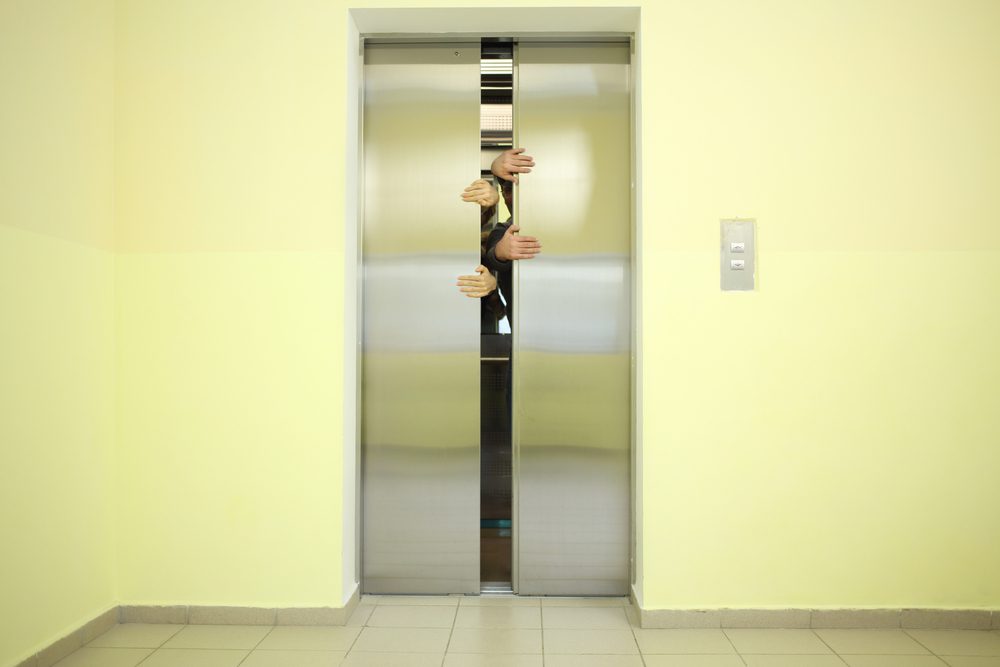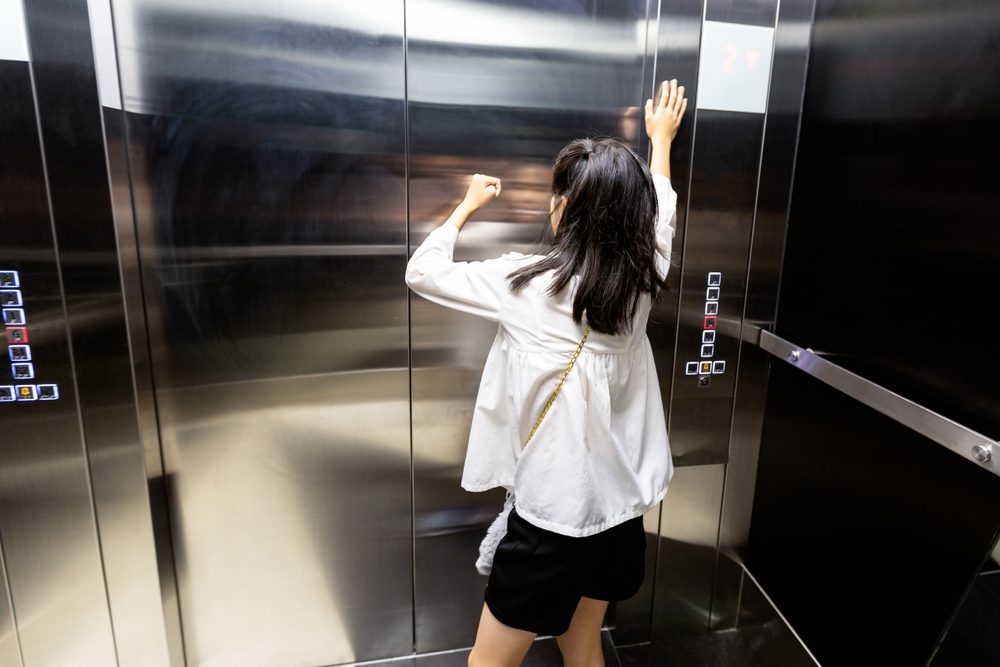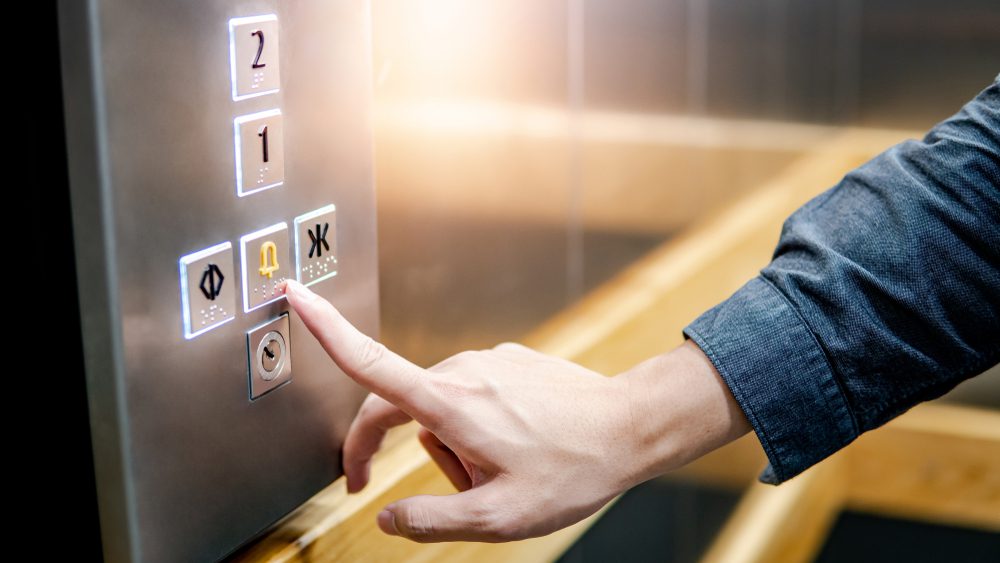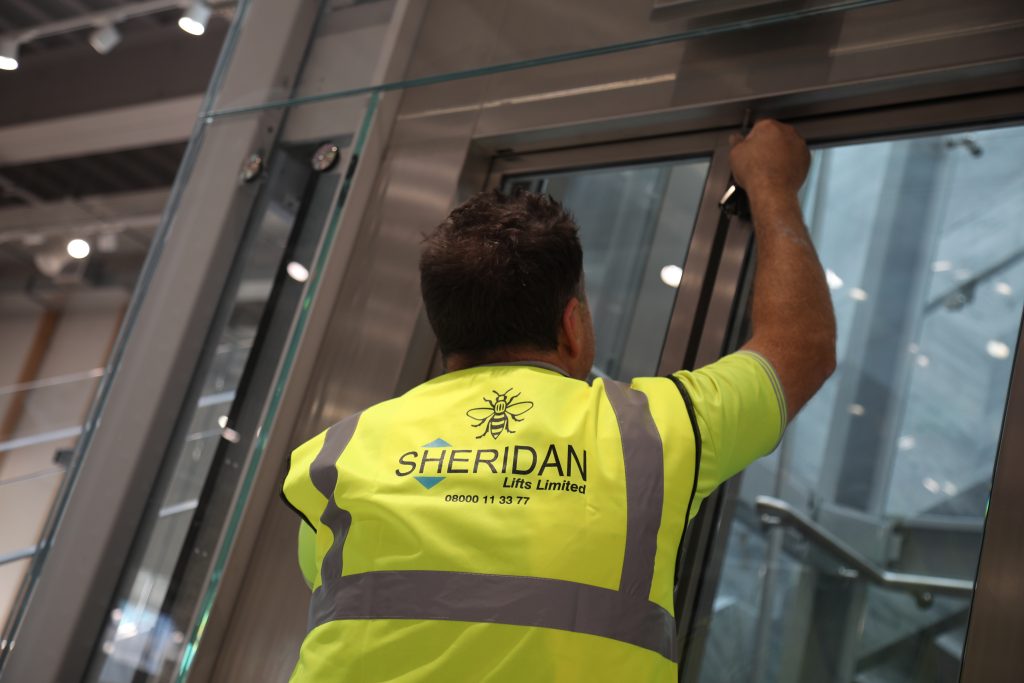If you ever find yourself in the unfortunate situation of being stuck in an elevator, or it is a common worry that goes through your mind, this is the blog that you need! As the UK’s leading independent lift company, we’re here to explain exactly what you should and shouldn’t do if the lift breaks down and you’re stuck inside.
Being stuck in an elevator can be a serious matter, which is why preventing elevator accidents and reducing the need for lift repairs should be prioritised if you are a building owner. Elevators can be incredibly important in the day-to-day operations of commercial and residential buildings, making the need to minimise lift breakdowns even more crucial.
It is understandable that getting stuck in a lift can cause immense anxiety, but you shouldn’t fret! Keep reading this guide on the do’s and don’ts of being stuck in an elevator to better prepare yourself should this ever happen to you.

Do: Call your Lift Engineer
In the event of a lift breakdown, it is recommended that you immediately notify your lift engineer. There should be an elevator call button fitted inside the elevator that allows you to call the maintenance team or reception.
Once you inform them of your situation, they will call their dedicated lift company. As soon as the lift engineer has been notified of the lift breakdown and stuck passengers, they will be on their way quickly – so you just need to be as patient and calm as possible.
At Sheridan Lifts, you can count on us as one of the UK’s leading elevator companies to help you get out of a stuck elevator. With certifications and accreditations to prove our expertise and capabilities, our lift engineers will be able to get you out safely in no time.
Don’t: Panic!
Staying calm is one – if not the – most important rule should you find yourself trapped in a lift. Not only can this help keep you safe, but it can also ease any other passengers stuck with you as they can see that other people are not panicking.
Panicking does not help anybody – certainly not you – so there is no reason to panic. Calm your mind and soothe your worries by practising calm breathing techniques. Once the alarm button has been pressed, and you inform the emergency responder about your situation, emergency personnel are instantly on their way to you.
If you have a mobile phone (or cell phone as they say across the pond) on you, unfortunately, you will not be able to use it effectively if you end up trapped in the lift, as enclosed metal elevator shafts often reduce the strength of mobile phone signals. However, if you do find that you’re able to get some service in the shaft, then finding a spot with the best service may be a good idea in the unlikely event that the emergency button is faulty.
In a glass elevator particularly, you may find that the mobile phone signal is much stronger.
Do: Move to the Back of the Lift
When the emergency responders arrive and the elevator doors are closed shut or stuck, they will attempt to safely pry the doors open with their tools. As a result, it is a good idea to move to the rear of the lift to give them enough space to do this without anyone being hurt in the process.
Regardless of whether the engineers have arrived yet, staying towards the back of the elevator may make you feel safer anyway, especially if the doors are slightly or fully open but there is mostly a concrete wall on the other side.
Don’t: Jump Around or Hit the Elevator
We understand that getting stuck in an elevator is not a pleasant experience and it can become overwhelming. To prevent any injuries, it would be wise to avoid jumping around or hitting the elevator in frustration, anger, or just trying to find a way out.
If a lift suddenly stops in the middle of moving, avoid making dramatic movements such as jumping up and down and hitting the walls of the shaft. Instead of kickstarting the lift (which we assume is what you’re trying to do here), it may actually cause the lift to abruptly drop down, which may lead to severe injuries and increased panic.
Stay calm and stay still – if you’re stuck in an elevator with others, it would be worth letting them know about the dangers of jumping around too much so that they don’t try doing it themselves.
Do: Take Advantage of the Safety Features in the Lift
Lifts are usually installed with emergency lighting, so you don’t have to worry about being kept in the dark either. This automatically turns on in the event of a power failure or stalling of the lift.
On the other hand, if the lift is dark, find a source of lighting – your mobile phone will come in handy here.
Every lift will be equipped with safety features such as emergency phones or an emergency call button. These are meant for the purposes of a lift breakdown and stuck passengers, so make sure you take advantage of them!
Pushing the alarm button will connect you to an operator who will ask questions about your situation – trust them enough to be able to brief them on what has happened without getting too carried away. They’re only trying to find out what type of help is needed, and how to get help to you as soon as possible.
Once they have all of the information needed such as area of entrapment, type of lift, and number of stuck passengers, a team will be dispatched to your location to get you and any other trapped passengers out of the lift.
Don’t: Try to Open the Doors
Absolutely do not attempt to pry the doors open if they’re stuck closed. Forcing your way out is extremely dangerous, and you are probably much safer inside the elevator itself as the likelihood of an elevator free-falling is not very high.
Try pressing the Door Open button, and if the doors do open, but you find yourself in between floors, do not attempt to climb out! It is possible that the elevator might start moving again, so trying to climb or crawl out, even if you can see the other floor, is not recommended and can lead to serious accidents.
Instead, try calling out for help to people on the other floor.

Fear of Elevators
If you experience getting stuck in a lift, it may cause you to develop a growing fear of elevators, preventing you from using a lift again. Or, maybe you have seen a film about people dying because of a stuck elevator (despite the chances of this being very slim). Or, perhaps you already have an elevator phobia or claustrophobia, of which the latter is amplified when using elevators.
If this is you, then you can be rest assured that you are not alone.
There is no official name for a phobia of elevators – however, it is more common than you might think, and ranges from mild to severe. Claustrophobia (fear of enclosed spaces) and agoraphobia (fear of being trapped with no clear escape) are also reasons for why a person might avoid elevators.
Nonetheless, elevator phobia can affect people’s way of living – for example, it may make them choose taking the stairs instead of the lift, which may end up being dozens of flights of stairs. It may also affect their decision on accepting a job offer, especially if the office location is on a high floor.
As you can see, phobias, not just elevator phobia, can influence people’s behaviour, but it doesn’t have to take over your life. With severe phobia, it is suggested to seek professional help if you are trying to conquer your fears.
It’s important to note that if you would like to overcome your anxiety about elevators, you must gradually increase the number of elevator rides that you take. Educating yourself on elevator safety rules and familiarising yourself with elevator operation can help curb anxiety as well.
How to Avoid Getting Stuck in an Elevator
So, the question is – can you avoid getting stuck in an elevator? You sure can.
Following Protocol
If you are the owner of the building or elevators, it is your responsibility to ensure that all lifts within the building are regularly maintained and inspected so that they are compliant with lift regulations and are suitable for use. Scheduling regular maintenance and servicing of lifts can help to minimise the risk of lift breakdowns, therefore preventing people from being stuck in an elevator.
As a passenger, to reduce your chances of getting stuck in an elevator, you should make sure that you use elevators for their purpose. For example, if a passenger lift can only carry a certain number of people, and you can see that a lift is overcrowded, don’t use the lift! If the maximum weight is exceeded, the lift may not be able to handle the excess weight, causing it to stop midway.
If you are unsure about the maximum capacity of a lift, this is usually signposted inside and sometimes outside of the lift. Waiting a few extra minutes for the next lift to arrive is much better than getting stuck in one.
Using Stairs in the Case of a Fire
If the fire alarm has been set off in the building and you are on your way to evacuating, at all costs, avoid trying to use the lift. Buildings should be fitted with fire prevention initiatives, and lifts are typically installed with fire safety measures – however, this doesn’t mean that you should use the lift in the event of a fire.
Whilst it may seem as the quickest path to exiting the building at the time, it is not the safest, which is why it’s recommended to follow your building’s fire escape route. Taking the stairs and using fire exit doors can lead you safely out of the building, whereas taking the lift may actually cause you to be trapped in it.

Safe Usage of Elevators
Now that we’ve covered what to do if you end up being stuck in an elevator, elevator phobia, and how to avoid these circumstances, let’s move onto how you should safely use an elevator in the future.
Knowing how to use an elevator can also help reduce the likelihood of it breaking down and trapping you inside, so it’s good practice to learn about how to use an elevator safely and for its intended purpose.
Buttons Only Need to Be Pressed Once
First of all, try not to repeatedly press the buttons in the elevator – be patient and only press them once! There is absolutely no need to press buttons more than once, it will not make the elevator doors open or close quicker, nor will it make the shaft move any faster to your desired floor.
Let Others Out First
If you are getting on a lift, ensure that you let passengers off the elevator before going inside. This makes it easier not only to enter the lift, but also to minimise collisions and accidents. If anything, you’ll find yourself on the lift much faster if you let others off first.
Let the Doors Close
Once the elevator doors have started closing, avoid using your hands, feet, bag, or other to stop it from closing to let others or yourself inside the lift. Although we commonly see this in film and television, this shouldn’t be replicated in real life as it can potentially cause damage to the lift’s closing and opening mechanism.
Additionally, you’ll want to make sure that clothes and accessories, bags or luggage, even your hair, aren’t caught between the doors. This can be extremely dangerous, especially for yourself.

Emergency Lift Repairs with Sheridan Lifts
At Sheridan Lifts, we supply bespoke lift maintenance and servicing contracts that can keep your lifts running smoothly, prioritising the safety of persons in the building. Our expert lift engineers will regularly check your lifts, ensuring that they are compliant, reliable, and safe for use.
If you do find yourself stuck in an elevator, Sheridan Lifts also provides emergency lift repairs with an emergency phone line that is open 24/7, 365 days a year. With a 1-hour callout in the event of stuck passengers, you can rely on Sheridan Lifts to safely get you, or others, out of the elevator and even get the lift moving again.
Our experienced team of engineers are qualified and highly skilled, so you’re in good hands should you find yourself stuck in an elevator. Get in touch today!